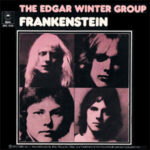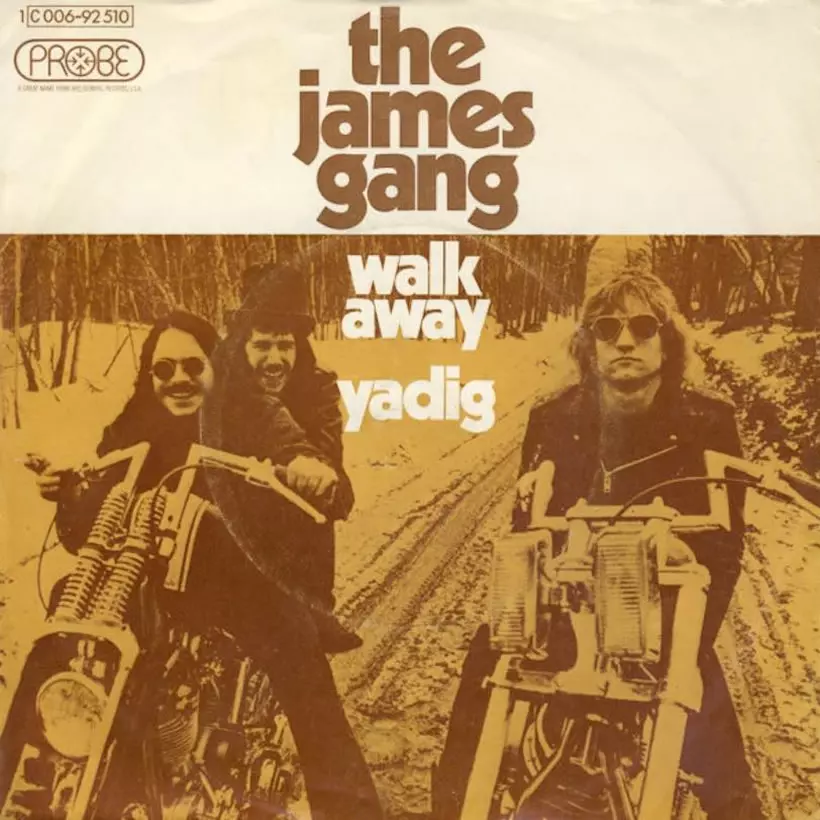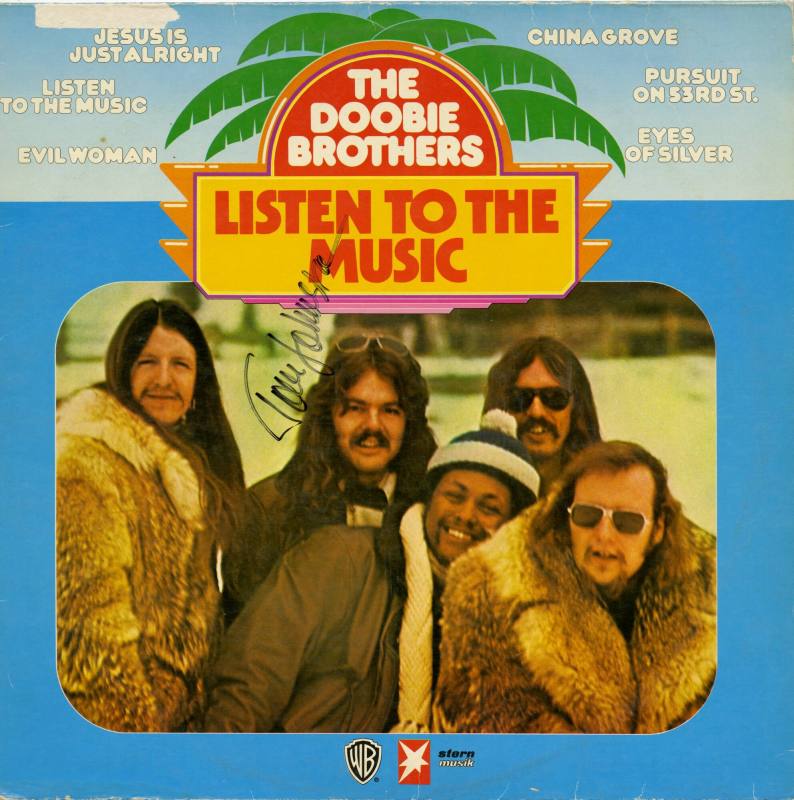 There’s something both feral and futuristic about Edgar Winter’s “Frankenstein.” It’s a track that shouldn’t have worked on paper — a sprawling, wordless instrumental from a 1973 rock album — yet it became a monster hit. And that word isn’t just a metaphor: “Frankenstein” is a sonic creation stitched together from pieces of jazz, blues, funk, and hard rock, then jolted to life by synthesizers and saxophones. It’s alive, it’s weird, and it grooves like nothing else from its era.
There’s something both feral and futuristic about Edgar Winter’s “Frankenstein.” It’s a track that shouldn’t have worked on paper — a sprawling, wordless instrumental from a 1973 rock album — yet it became a monster hit. And that word isn’t just a metaphor: “Frankenstein” is a sonic creation stitched together from pieces of jazz, blues, funk, and hard rock, then jolted to life by synthesizers and saxophones. It’s alive, it’s weird, and it grooves like nothing else from its era.
When Winter unleashed “Frankenstein,” the musical landscape was changing fast. Rock was stretching beyond verse-chorus conventions, experimenting with new textures and sounds. Prog rock was on the rise, fusion was melting genres, and technology was giving musicians new toys to play with. “Frankenstein” fit right into that chaos — but unlike the sprawling concept suites of Yes or Emerson, Lake & Palmer, Edgar Winter took the experimental spirit and turned it into something leaner, meaner, and danceable.
It’s not just a song; it’s an experience — an electrified jam session that fuses the human and the mechanical, the organic and the artificial. The title couldn’t be more perfect.
The Birth of the Beast
Edgar Winter, already an established multi-instrumentalist and prodigy, wasn’t just another long-haired rocker looking to make noise. He was a classically trained musician from Texas who grew up immersed in jazz, blues, and rock ‘n’ roll. Before “Frankenstein,” he had already made waves with Entrance (1970) and White Trash (1971), showcasing his mastery of multiple instruments and genres.
The genesis of “Frankenstein” came from live shows where Winter and his band would jam freely, often stringing together segments of solos — sax, drums, and synthesizer — into one unholy medley. Audiences loved it, but record executives weren’t sure what to make of it. When Winter finally decided to record it for They Only Come Out at Night, the band had to piece together bits of tape from various takes, editing and re-editing them into a cohesive whole.
That editing process gave the song its name — the track was literally “stitched together” from different musical fragments, much like the monster in Mary Shelley’s novel. When Winter’s drummer Chuck Ruff joked that it was their “Frankenstein,” the name stuck. And just like Shelley’s creation, it was misunderstood at first — a beast of many parts that somehow found a pulse.
The Sound of Controlled Chaos
From the opening seconds, “Frankenstein” makes its intentions clear: this isn’t background music. It’s a wake-up call. The drums burst in with power and precision, immediately followed by that unforgettable riff — a jagged, muscular sequence that’s equal parts menace and funk. It’s heavy but playful, calculated but primal.
Winter’s arrangement feels alive, constantly shifting gears without losing focus. Every few bars, something new happens — a tempo change, a riff variation, a sudden solo. Yet despite the chaos, it all flows. It’s a song in perpetual motion, powered by the sheer energy of musicians at their peak.
One of the key reasons “Frankenstein” works so well is its balance between structure and spontaneity. The band never loses the groove, no matter how wild it gets. Dan Hartman’s bassline keeps the track grounded while Winter’s keys, sax, and synthesizer take flight. Ronnie Montrose’s guitar snarls and bites, adding the perfect rock counterpoint to Winter’s jazzy flourishes.
And then, of course, there’s that drum break — a thunderous, bone-rattling solo that turns the track into a celebration of pure rhythm. Chuck Ruff’s drumming is ferocious yet controlled, leading perfectly into Winter’s synthesizer explosion that follows.
The Synth Revolution
When most people think of early-70s rock, they think of guitars — distorted, dominant, and everywhere. Edgar Winter flipped that hierarchy. “Frankenstein” made keyboards the star, and not in a soft, background way. Winter’s use of the ARP 2600 synthesizer was revolutionary.
He treated it like a lead guitar, bending pitches, twisting knobs, and coaxing snarls out of circuits. This was one of the first rock songs to put a synthesizer front and center, showing that electronic instruments could have soul. The way Winter used it — expressive, dynamic, unpredictable — paved the way for future synth-driven rock acts and helped bridge the gap between rock and electronic music.
The famous clip of Winter performing “Frankenstein” live, wearing a white jumpsuit and slinging a strap-on keyboard like a guitar, became iconic. That “keytar” — one of the earliest ever used on stage — symbolized the merging of human and machine. It made the visual and musical metaphor complete: Frankenstein’s monster had become rock ‘n’ roll incarnate.
The Groove That Wouldn’t Die
Despite its experimental nature, “Frankenstein” is infectiously groovy. It’s not just a technical showcase; it’s a song that moves. The main riff, driven by a gritty bass and punctuated by handclaps and cymbal crashes, feels both raw and danceable.
There’s a sense of swagger in the rhythm section — a funk undercurrent that keeps the song from drifting into self-indulgent territory. Even during the wildest solos, there’s always a pulse, a heartbeat keeping the monster alive.
That combination of technical skill and rhythmic accessibility made “Frankenstein” unique. It was a musician’s song that also connected with everyday listeners. DJs played it at parties. Rock fans loved its heaviness. Jazz musicians admired its sophistication. Even funk fans could nod along.
The result? The song shot to No. 1 on the Billboard Hot 100 in May 1973 — an almost unheard-of feat for an instrumental rock track. It dethroned the likes of Stevie Wonder and Elton John that month, proving that people weren’t afraid of a monster if it could make them dance.
The Performance Power
Listening to “Frankenstein” in its studio form is thrilling, but seeing it live was something else entirely. Edgar Winter was a whirlwind on stage — switching between saxophone, synthesizer, and percussion without missing a beat. The live versions were often extended, with improvisational sections that allowed the band to flex their chops and show off their chemistry.
Winter’s charisma made it even more compelling. He wasn’t content to stand behind a keyboard; he wanted to perform. His movements were theatrical but not forced — part mad scientist, part rock god. Watching him build “Frankenstein” on stage, piece by piece, gave the audience the feeling of witnessing creation itself.
This showmanship turned the song into a live staple, not just for Winter but for other rock instrumentalists who followed. It proved that a song without lyrics could still command a crowd, tell a story, and build tension and release through sheer musicianship.
The Monster’s Legacy
Over the decades, “Frankenstein” has taken on a life of its own. It’s become a touchstone for instrumental rock — a rare song that bridges generations of musicians and fans. It inspired countless artists to experiment with synthesizers, to break down genre boundaries, and to treat technical prowess as something that could coexist with groove and fun.
In many ways, it prefigured the fusion explosion of the mid-70s, where artists like Jeff Beck, Herbie Hancock, and Weather Report blurred the lines between rock, jazz, and funk. But “Frankenstein” did it without pretense. It wasn’t academic or overly polished. It was wild, physical, and joyous — the kind of song that makes you want to air-drum even if you’ve never touched a kit.
It’s also been used endlessly in pop culture. From sports arenas to car commercials to Halloween playlists, “Frankenstein” has maintained its place as one of the most instantly recognizable instrumentals ever recorded. Its title gives it a built-in association with spooky season, but its appeal is year-round — a song that celebrates creativity, experimentation, and the beautiful chaos of sound.
The Experiment That Worked
At its core, “Frankenstein” represents the perfect experiment — one where everything that could have gone wrong went gloriously right. It’s a track born out of improvisation, shaped by chance, and elevated by sheer talent. It didn’t just blur the line between genres; it obliterated them.
It was also proof that Edgar Winter wasn’t just a sideman or a novelty act — he was a serious musician with vision. Long before synth-rock became trendy, he was showing how electronic sounds could coexist with rock and roll energy. That forward-thinking spirit is what makes the song feel fresh even fifty years later.
“Frankenstein” also broke ground for other instrumental hits that followed. Songs like “Jessica” by The Allman Brothers Band or “Eruption” by Van Halen owe something to the space Winter carved out — proving that music didn’t always need words to tell a story or capture imagination.
The Soul Beneath the Circuits
For all its high-tech wizardry, what makes “Frankenstein” endure is its soul. Beneath the synthesizer squeals and drum breakdowns, there’s warmth — a sense of play and joy in the performance. Winter’s musicianship was always rooted in emotion, not just technique. Every solo, every tempo shift, feels like a conversation between instruments, not a competition.
There’s also an undercurrent of humor. “Frankenstein” doesn’t take itself too seriously. It’s theatrical, sure, but it’s also fun — the kind of track where you can imagine the musicians grinning between takes. That joy seeps through every note, making it feel alive in a way few instrumental rock songs ever do.
The Monster Lives On
Today, “Frankenstein” stands as one of the greatest instrumental rock tracks of all time — a testament to what happens when creativity and curiosity collide. It’s been over half a century since it first climbed the charts, yet it still sounds vital, futuristic, and just a little bit dangerous.
It’s a song that continues to inspire musicians to push boundaries, to experiment fearlessly, and to blend genres in unexpected ways. Every time that iconic riff kicks in, it still feels like lightning striking.
Edgar Winter didn’t just create a hit; he created a monster — one made of rhythm, melody, and electricity. And like all great monsters, it refuses to die.


